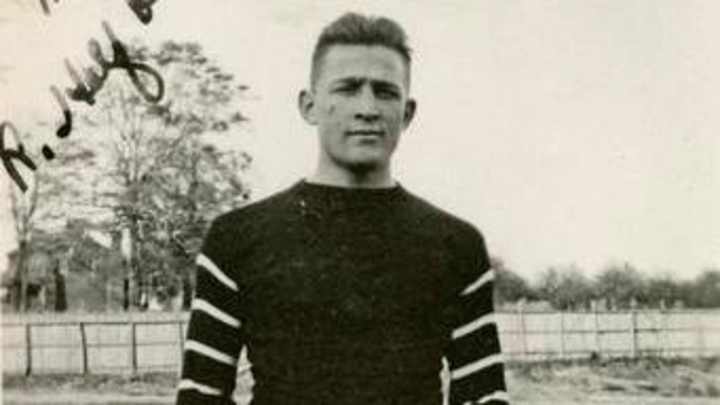TD Record from 1912 Iowa-IU Still Stands

Iowa and Indiana first met on the football field on Nov. 9, 1912. Both teams were winless in Big Ten play.
Iowa escaped the cellar with a 13-6 victory before 6,000 fans at Washington Park in Indianapolis, Ind. A victory that, according to the “Hawkeye’ Yearbook, “does not show the relative ability of the teams, as hard luck kept Iowa from making three more touchdowns.” It was a forgettable game, but it included a record-setting play that has stood the test of time for over a century.
Iowa had a 13-0 lead with less than 5 minutes to play, and the Hoosiers lined up to punt from their own 2-yard line on fourth down. The punter was Mickey Erehart, playing in his fifth college game. The sophomore would go on to be a captain and three-year letterman for the Hoosiers. He later became a doctor.
Earlier in the game, Erehart almost had a punt blocked when he got pressure from the right side of the Iowa line. And that was on his mind as he lined up, his heels just inside the back of the end zone.
He fielded the snap, and again the right side of the Iowa line stormed through Indiana blockers and drew a bead on Erehart. So instinct too over. He ran.
Erehart got outside the end and saw nothing but open field ahead. He went the distance for what was first called a 108-yard touchdown run. Years later, the rules were revised and end zone yardage was no longer included. So Erehart’s touchdown dash officially became 98 yards. And it still stands as a record today, even though the Big Ten Record Book lists the game as being played at Iowa instead of Indianapolis.
Minnesota’s Darrell Thompson tied the record with a 98-yard touchdown run against Michigan on Nov. 7, 1987.
The longest rushing plays in Big Ten history include several other games involving Iowa.. The Hawkeyes’ Eddie Vincent has the third-longest run, a 96-yard touchdown scamper against Purdue on Nov. 6, 1954. Holding down fifth place was a 94-yard run by Purdue’s Mike Pruitt against Iowa on Nov. 2, 1974. And Iowa’s Royce Mix is tied for ninth with a 92-run against Illinois on Nov. 25, 1972.
Erehart admitted his record-setting run was ad libbed in a book titled “Glory of Old IU,” by Bob Hammel and Kit Klingelhoffer.
“When I got the ball, looked up, and there came that end again,” Erehart said. “So being a sophomore and a fool, I decided to run. If coach (Jim) Shelton could have, I’m sure he’d have killed me right then and there. But I did get outside the end and suddenly I was in the open, so I kept running as hard as I could.
“I was alright for a while, but I had a broken nose and some kind of guard on it, so I could only breathe through my mouth. I kept running and wheezing and gasping and praying, and I guess that something worked because nobody caught me. I was never so glad to see the end zone in my life.”
Earhart’s unscripted dash was the talk of the game afterwards. This is how the game story in the Des Moines Register started:
“With less than 5 minutes to play, Earhart in a sensational run the full length of the field saved Indiana from a shutout in the game with Iowa today. The score was Iowa 13, Indiana 6.” The Indianapolis Star reported that Erehart “used his noodle” on the play.
“It was a clever piece of quick thinking on the part of Erehart of Indiana in the final quarter which saved his team from a shutout. He was called on for a punt while standing on his own goal line, and when set for the kick, saw an opponent break through the line. It was too late to risk a kick and he sized up the situation in a flash, dodged the man who had broken through the line and raced down the field aided by splendid interference for Indiana’s lone touchdown.” The Indianapolis Star added, “The brilliant playing of Erehart featured the contest. And his marvelous run through the entire length of the field was the signal for Hoosier rooters to give their first real cheer of the day.”
The Star also said that Erehart’s dash “brought the rooters in the grand stand to their feet and sent the Indiana supporters along the sidelines dancing and shrieking with joy.” And it still remains a Big Ten record.
